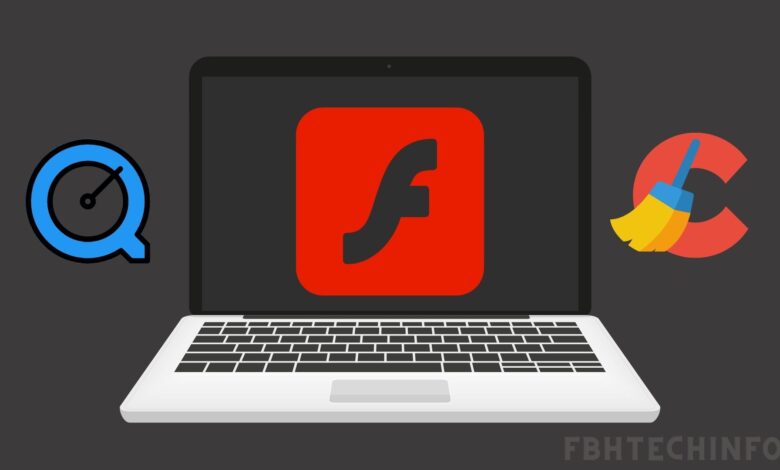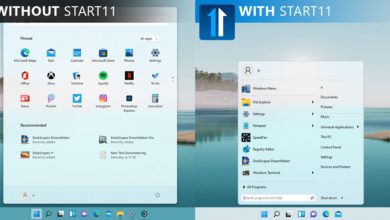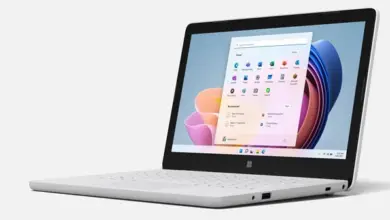5 Softwares you shouldn’t have on Windows

Many technology transitions have led to replacements and discontinuations (for example, the transition from Flash to HTML5). Consequently, it is not unusual to find versions of programs or applications in Windows that are not updated and therefore should not be installed.
Having programs and applications without updating or maintenance is a security risk, especially in a Windows operating system, where users use an administrator account by default. This is a bad habit established by Microsoft and that the company has not rectified for various reasons. Still, it is seen and proven that it is an actual highway that facilitates the exploitation of vulnerabilities.
Despite this, using a standard user account should not be an excuse to neglect those programs or applications that have not been updated for a long time, either because the user does not need them or because they have run out of support. In any case, it is advisable to carry out the pertinent uninstallation processes, so we will indicate the steps to do it in Windows.
We will mention discontinued technologies that it would be better to uninstall as soon as possible. We take the opportunity to expose other things that it would be advisable not to use even if they still have support.
1. Adobe Flash Player

It must be said, Flash was at the time a necessary evil, primarily to provide the web with multimedia functions that it lacked until the appearance of HTML5. This also encompassed many gaming websites, of which there are possibly still a few that have not migrated to more modern and supported technologies.
The reason why Flash was considered a necessary evil is based on two grounds:
- First, because it was a proprietary technology, it was difficult for third parties to supervise it and its portability to other platforms.
- Second, because it has starred in countless security scandals, many consider it unsafe technology.
If to the two previous points we add that it is currently discontinued (at least for the West), there is no need for more reasons to uninstall Flash if it is installed on the computer (and not only Windows but also Linux and macOS).
2. QuickTime

QuickTime is a multimedia playback framework developed by Apple that has its player. The story here is not much different from the Flash, although without so many murky episodes surrounding the security it offered.
However, Trend Micro discovered two severe security flaws in April 2016 that led to the recommendation to uninstall QuickTime for Windows, as Apple discontinued development three months earlier. This meant that the vulnerabilities would remain forever, exploitable both through locally stored files and the plugins that existed for web browsers.
Since Windows 10 is the most used version and appeared in 2015, it isn’t easy to find a computer with QuickTime installed. Still, if it does, we recommend its immediate uninstallation.
To play video files in QuickTime format, which used to use the ‘.mov’ extension, it is recommended to use VLC, a multimedia player of proven quality and powerful multiplatform support.
3. CCleaner

CCleaner is a cleaning application that you should not use, and therefore, should not have installed in Windows.
CCleaner has been accused of breaking Windows installations on many occasions, but if the gossip doesn’t convince you, maybe it will because Microsoft decided in 2019 to put the application on its blacklist. If the company responsible for Windows makes a similar move, you should not have CCleaner installed on your PC.
The reasons put forward by the Redmond giant were the various problems that CCleaner had during the second half of the past decade. To begin with, we have the discovery of backdoors in 2017 that compromised multiple versions of the application and opened a remote administration backdoor that was used to install malware, keyloggers, ransomware, and take control of computers.
Second is Avast’s acquisition of Piriform, developer of CCleaner. The change of hands did not sit well with the cleaning application, which introduced persistent and annoying advertisements that would reappear even if its cookies were deleted. This was added to the compatibility problems that at least at the time it had with Windows 10.
An application that has fallen out of favor and on top of it can break the system. What are more reasons needed to uninstall it?
4. Microsoft Silverlight

At the time, it was defined as “Microsoft’s Flash” since it was created to build and run rich Internet applications. It was conceived for use in other less technical words through a web browser.
Although Silverlight never reached the diffusion and popularity of Flash, it did get used by services such as Netflix, which required it in case of wanting to reproduce content through a web browser.
Like Flash, Silverlight was and still is proprietary software, so third parties could not freely audit it, and its support across multiple platforms was limited, so much so that it never made it to Linux.
Fortunately, the consolidation of HTML5 invited streaming content platforms to offer at least multi-technology support that was not limited to Microsoft’s Silverlight and other similar solutions. However, the transition of these services to HTML5 has indeed had a very high price as they have forced the consolidation of DRM, which is served through WideVine.
The situation derived from the consolidation of DRM in HTML5 is far from ideal in terms of freedom for users. Still, at least Linux users no longer have to resort to Windows to enjoy the content offered by various platforms.
Apart from being deprecated by the push of HTML5, Silverlight was officially discontinued by Microsoft in October 2021, so you already have two compelling reasons to uninstall it as soon as possible.
5. µTorrent (the uTorrent)

The case of μTorrent is, by far, the most scandalous that we will discuss in this article, mainly because it continues to have so many users, so many, that it will likely continue to be the most used BitTorrent client today.
μTorrent became very popular thanks to its minimalist interface and low resource usage. It started as an open-source project, but it became proprietary software after being acquired by BitTorrent, Inc., now Rainberry, Inc.
That a BitTorrent client under the company’s umbrella responsible for developing the P2P file-sharing protocol should be a powerful signal to place trust, but nothing is further from reality since μTorrent has been involved in various scandals during the past decade.
More specifically, those responsible for μTorrent have been caught mining Bitcoins without users’ permission. It has spread malware through an advertisement, and a bug was discovered that allowed them to control a computer remotely and steal downloads. Above, one has to go through the checkout to eliminate the advertising present in the application.
In short, μTorrent is a proprietary application and maliciously managed by its managers, so it is recommended to uninstall it and replace it with free software such as qBittorrent or Transmission client.
Hardware manufacturers’ bloatware
This is an old story, especially for Windows laptops, which usually come up with the manufacturer’s garbage. This garbage, commonly called bloatware, usually contributes little to nothing to users, so in the end, it mainly serves to use up disk space uselessly and increase the attack surface that malicious actors can exploit.
The presence of bloatware ends up making more than one. When buying a computer, decide to reinstall the system and put one clean not to drag unnecessary things.
Conclusion: Remember to check well what you have on your computer from time to time (even if you do not use Windows)
The pace of life we lead and the high automation offered by modern operating systems can make us forget to check from time to time what we have installed in the operating system and some applications such as web browsers.
As we have already said several times, it would not only be advisable to eliminate discontinued, suspicious components of doubtful or unknown origin, but also any application or add-on that is not going to be used again to minimize the attack surface (obviously, one does not go to uninstall an application that uses tiny, but uses it and will continue to use it).



